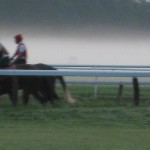New additions to the Hemingway Collection at the JFK library in Boston. Looks good. Best to all, Christine
Hemingway and Ireland and Paris Without End
As a writer, you should not judge, you should understand.
Ernest Hemingway
I just returned from Ireland where I finished reading a book called Paris Without End: The True Story of Hemingway’s First Wife. I loved it.

I’ve read at least five Hemingway biographies as well as the wonderful Bernice Kertin’s book called The Hemingway Women. I nevertheless learned a great deal from this wonderful book by Gioia Diliberto. The insights were fascinating.
As I finished the book, I thought about the irony of Hadley’s pain about being what she called “written out of” The Sun Also Rises. Everybody appeared in some form or another in the book (Duff Twysden as Brett; Pat Guthrie as Mike Campbell; Robert Cohen was Harold Loeb; Bill Gorton was Don Ogden Stewart; and Hem was Jake–maybe) and she was nowhere to be seen. It hurt her, although she made light of it.
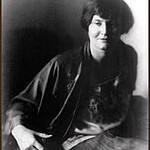
Hem did dedicate that book to her and her son, still, she was nowhere in evidence. The irony is that the last good writing that Hemingway did was A Moveable Feast, which was, in essence, a love poem in prose to Hadley. While some of the past may have been romanticized, there never was any question in his mind that he did his best writing and was his best self with her and never was that again in his heart. It is said that a page of A Moveable Feast was found in his typewriter at the locale of his suicide.

Having said all of the above, I thought about whether there was a Hemingway /Ireland connection. There is not a whole lot of Hemingway in Ireland, but he does have a strong connection in his friendship with James Joyce, who, of course, is the quintessential Irish writer and poet. In their Paris days, they engaged in quite a number of drunken sprees, although Hemingway’s drinking at the time was more excessive social drinking than what it became. James Joyce was a small, bespeckled man, and Hemingway was a hulking, large fellow. At more than one bar, Joyce, heavily intoxicated, would start to pick some fight verbally and, when physical threats were made, he’d wave his hand and say, “Handle it Hemingway.” Hemingway was know to have assisted James Joyce back to his Paris flat where James Joyce’s wife would answer the door with great disgust and say, “Well, if it isn’t the two great writers, James Joyce and Ernest Hemingway.”
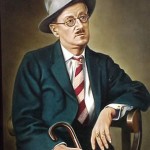
What I do think Hemingway would appreciate about Ireland is the natural beauty, the outdoorsy lifestyle, the fishing, and the rugged coast that has been kept rugged.
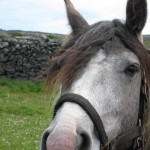
My own experience was that there was little affectation; the food was simple, fresh and terrific; and a conversation was always to be had if you simply began one with someone sitting next to you.
Hem never got over enjoying sitting down with local people and talking, whether it was in China, Key West, Cuba or Ketchum, Idaho. While on a trek to China with Martha, at her instigation, he was in his element immediately talking to people just riding bikes or sitting on the dock, while she found it all too dirty and too rustic.

I’m not a beer drinker, so I didn’t lift a Guinness in Hem’s honor, but I did down some wonderful scotch and soda in his memory. While much has been made of Hemingway’s macho image, Gioia Diliberto makes the point that each of his books really was a romantic love story at its heart. Brett and Jake had a love that could never be totally fulfilled; Catherine and Frederic left everything behind to escape into Switzerland in the hope of making their life work; Maria and Robert Jordan made one of the greatest love stories ever told. Consequently, it’s all very fitting that Ireland, the land of romance and high drama, has a Hemingway connection.


A Hemingway Ballet: Oxymoron??
AND THE NEW YORK TIMES REVIEW OF The Sun Also Rises, October 31, 1926
As you get older it is harder to have heroes, but it is sort of necessary. Ernest Hemingway
A man “wears a mask, and his face grows to fit it.” George Orwell

The Sun Also Rises as a ballet? Sure why not. For Whom the Bell Tolls would make a hell of an opera, I think. And I’d love to see a remake of The Sun Also Rises. Brett: Blake Lively. Jake Barnes: Jake Gyllenhall. Robert Cohn: Matt Damon. Mike Campbell: Jude Law. On my first read, I was not sure what all the fuss was about. Bunch of aimless drunks. Yes, Hemingway did a good job with the settings but, to me at age 19, the dialogue was a bit too : I am good. I am cold. When I returned to it years later, the light went on in a big way. I got that it was about dreams, loss, death, defeat, and hope. And love. Always love.
What was it thought of then? Below is the NY Times review of Hemingway’s The Sun Also Rises.
October 31, 1926
Marital Tragedy
|
THE SUN ALSO RISES |
Ernest Hemingway’s first novel, “The Sun Also Rises,” treats of certain of those younger Americans concerning whom Gertrude Stein has remarked: “You are all a lost generation.” This is the novel for which a keen appetite was stimulated by Mr. Hemingway’s exciting volume of short stories. “In Our Time.” The clear objectivity and the sustained intensity of the stories , and their concentration upon action in the present moment, seemed to point to a failure to project a novel in terms of the same method, yet a resort to any other method would have let down the reader’s expectations. It is a relief to find that “The Sun Also Rises” maintains the same heightened, intimate tangibility as the shorter narratives and does it in the same kind of weighted, quickening prose.
Mr. Hemingway has chosen a segment of life which might easily have become “a spectacle with unexplained horrors,” and disciplined it to a design which gives full value to its Dionysian, all but uncapturable, elements. On the face of it, he has simply gathered, almost at random, a group of American and British expatriates from Paris, conducted them on a fishing expedition, and exhibited them against the background of a wild Spanish fiesta and bull-fight. The characters are concisely indicated. Much of their inherent natures are left to be betrayed by their own speech, by their apparently aimless conversation among themselves. Mr. Hemingway writes a most admirable dialogue. It has the terse vigor of Ring Lardner at his best. It suggests the double meanings of Ford Madox Ford’s records of talk. Mr. Hemingway makes his characters say one thing, convey still another, and when a whole passage of talk has been given, the reader finds himself the richer by a totally unexpected mood, a mood often enough of outrageous familiarity with obscure heartbreaks.
The story is told in the first person, as if by one Jake Barnes, an American newspaper correspondent in Paris. This approach notoriously invites digression and clumsiness. The way Mr. Hemingway plays this hard-boiled Jake is comparable to Jake’s own evocations of the technique of the expert matador handling his bull. In fact, the bull-fight within the story bears two relations to the narrative proper. It not only serves to bring the situation to a crisis, but it also suggests the design which Mr. Hemingway is following. He keeps goading Jake, leading him on, involving him in difficulties, averting serious tragedy for him, just as the matador conducts the bull through the elaborate pattern of danger.
The love affair of Jake and the lovely, impulsive Lady Ashley might easily have descended into bathos. It is an erotic attraction which is destined from the start to be frustrated. Mr. Hemingway has such a sure hold on his values that he makes an absorbing, beautifully and tenderly absurd, heartbreaking narrative of it. Jake was wounded in the war in a manner that won for him a grandiose speech from the Italian General. Certainly Jake is led to consider his life worse than death. When he and Brett (Lady Ashley) fall in love, and know, with that complete absence of reticences of the war generation, that nothing can be done about it, the thing might well have ended there. Mr. Hemingway shows uncanny skill in prolonging it and delivering it of all its implications.
No amount of analysis can convey the quality of “The Sun Also Rises.” It is a truly gripping story, told in a lean, hard, athletic narrative prose that puts more literary English to shame. Mr. Hemingway knows how not only to make words be specific but how to arrange a collection of words which shall betray a great deal more than is to be found in the individual parts. It is magnificent writing, filled with that organic action which gives a compelling picture of character. This novel is unquestionably one of the events of an unusually rich year in literature.
http://www.nytimes.com/books/99/07/04/specials/hemingway-rises.html
Not bad for an unknown kid from Illinois.

Hem goes Digital
http://local.msn.com/travel/items-from-hemingways-cuba-home-go-to-jfk-library-6
Hemingway’s records from Cuba have been recorded digitally. The originals are in the Finca Vigia Collection at the JFK Library, Hemingway Collection, in Boston.
Mariel Hemingway’s “Running from Crazy”
About morals, I know only that what is moral is what you feel good after and what is immoral is what you feel bad after. Ernest Hemingway
You expected to be sad in the fall. Part of you died each year when the leaves fell from the trees and their branches were bare against the wind and the cold, winter light. But you knew there would always be the spring, as you knew the river would flow again after it was frozen. When the cold rains kept on and killed the spring, it was as though a young person died for no reason. A Moveable Feast, Ernest Hemingway
Mariel Hemingway has written a new movie called “Running from Crazy.” It’s her documentary about the Hemingway legacy of mental illness and its common outcome: suicide.

I have not seen it yet. I’m feeling hostile to it although I’m not sure why. I like Mariel Hemingway very much. She perseveres; she tries to live healthy; she seems honest. Perhaps I’m feeling the negative vibe of this movie and not liking that. It’s about bad stuff that seems inescapable, predestined.
Mariel never knew her grandfather and there is no question that depression was a part of his make-up. Suicide seems not only to run in the family but in those around Hem. Martha Gellhorn killed herself when in ill health. Adriana Ivancich, his muse, killed herself in despair. Siblings of Hem killed themselves. But is depression “crazy”? Is not suicide perhaps the recognition that for yourself, tomorrow is just not bearable? It’s as sad as sad gets, but is it crazy? I don’t know. Maybe. Mental illness covers a broad spectrum.

I also read that Mariel is claiming in this movie documentary that her father, Jack, may have molested her older sisters, Muffet and Margaux. She then notes that he likely would not remember due to alcohol use/abuse and that he is not evil.(Apparently, Mariel’s mother also was an alcohol abuser.) I don’t know what to make of this: benign abuser/ non-evil molester?

Muffet has manic schizophrenia and is institutionalized; Margaux killed herself. There is apparently extraordinary video footage of Margaux as she made a documentary about her famous grandfather including interviews of her father. Those videos are movies within a movie in Mariel’s film.

By all accounts, Jack was a very nice man–outdoorsy, fisherman. I’ve heard the alcoholic portion before but not the abuser accusation. I’ll need to see the film to see if there is proof or some vague speculation. It’s unfair to the film to critique it without a viewing. I will see it and report back. Anyone who has seen it already, jump in please.
It is all unsettling. Family secrets are damaging and if Mariel has the proof, and wishes to expose, then I say expose away. There is little more heinous than child molesting. I’ll see the movie and hope you do. Come to your own conclusions. I hope it sheds light on the Hemingway history and true story of their saga and curse. Let me know what you thought.

Death in the Afternoon: What do we do about this?
In order to write about life first you must live it.
― Ernest Hemingway
We don’t like bull fighting. It’s cruel. We care for and hope the bull will win. We, meaning Americans in general, don’t get it or understand how any civilized people could watch such a sport and actually sit through it and even applaud. I adore animals. I cannot watch the maiming and killings. So what did Hem see that we don’t? He loved animals and he had great heart and empathy.

I have to start by noting that I have always found The Dangerous Summer, Hemingway’s chronicle of a summer following two competing bullfighters, to be a wonderful, original and absorbing book. It started as an Esquire article and expanded to the book. I really loved it but for the killing of the bull scenes. I even understand and can accept the drama of the matadors, their dignity and honor. As much as all of us shun this sport, please take a chance and read the book for the saga and adventure that it was. It is excellent writing and you become part of the pageantry, of the training, and of the honor of being a bullfighter.

Pamplona of course is a key portion of The Sun Also Rises and Brett runs off temporarily with the young matador. She then does her noble act of leaving him so as not to ruin him. Because Spain and Pamplona are so wrapped in the Hemingway image and lore, it is important to know a bit about it, although not imperative to accept that bullfighting is in fact noble in its enactment of the life and death cycle.
So that brings us back to the old philosophical question: Must we avoid a writer because we hate his subject matter? My first post talks about how I don’t like hunting, fishing, war, bullfighting, heavy drinking and yet I love Hemingway. How is that possible? Because in the fewest words possible, Hemingway gets to the heart of what matters, what makes all of us tick, what it means to die and to live. The arena may be war or fishing or bullfighting but it’s about love, hate, living and dying. Thus you don’t have to love his forums to love his books.

 I just read in Hemingway’s Cats, a truly lovely book by the way, that Papa lost his love for big game hunting as well as for bull fighting in his last years. He chose later in life to photograph animals in Africa, not shoot them, and felt that bullfighting had become a commericial and depressing spectacle. I admire people who can change opinions and he could. Ah, just more for me to like.
I just read in Hemingway’s Cats, a truly lovely book by the way, that Papa lost his love for big game hunting as well as for bull fighting in his last years. He chose later in life to photograph animals in Africa, not shoot them, and felt that bullfighting had become a commericial and depressing spectacle. I admire people who can change opinions and he could. Ah, just more for me to like.
By the way, I just came across the below which is some footage of Hem that I enjoyed. Please don’t take offence by the title of the link. I just copied it! But it is a treat to see Hemingway moving, walking, in his home. Take a look. I loved it.
http://fuckyeahhemingway.tumblr.com/post/44461799990/literaryartifacts-ernest-hemingway

IS IT TRUE?
Every man’s life ends the same way. It is only the details of how he lived and how he died that distinguish one man from another. Ernest Hemingway
It has been said someone bet Hemingway that he couldn’t write a story in six words that would make you cry. Try this on for size, ye of little faith.

FOR SALE: BABY SHOES, NEVER WORN.

If that doesn’t tear your heart out from the inside out and make you gasp for breath, then you have no soul.
Hemingway was complicated. For those of you who’ve read this blog from the beginning, and especialy the Mask post, the Hemingway bluster and the macho “stuff” were both real and a mask for what Hemingway felt he should be. Please remember his devastation at the death of his cat, Willie.

The above, for me, says so much. Can you in six words sum up anything? In my women’s group, we did a similar exercise. In six words, sum up your life. We had three tries ( three versions) if so inspired. It’s not easy. Mine were something like: ” Good Girl, Bad Girl, Okay Woman” and “Love as the answer, not sure.”
This will be a short post. I find the above so thought-provoking and devastating that I think it’s enough. Hemingway is anything but a one-trick pony.
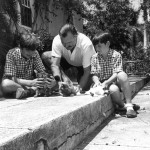

My novel and Hemingway

- Tell Me when It Hurts
The first draft of anything is shit. Ernest Hemingway
It is not my intent to “plug” my novels on this blog but once in a while it fits so I’ll write a bit about my first novel and Hemingway. My book is called Tell Me When It Hurts. La Femme Nikita meetsThe Horse Whisperer. That’s my novel. Healing, second chances with a few horses and a few dogs thrown in for good measure. One Amazon critic noted that it is more horse whisperer than femme nikita although she wrote a favorable review. She just thought the book jacket description suggested an action packed gun-fest. Fair enough comment. It is more romance than thriller. And as for reviews, small –no tiny–fry that I am, it is a rush to read a good review from someone across the country or nearby, and an icepick stab in the heart to read the bad ones. I only have a few of them but they hurt.
Hemingway inspired me in a few ways. I don’t think anyone can pull off his style without it reading like an entry into the best of bad Hemingway contest. (Some of the entries in the Best of Bad Hemingway are a hoot and are quite entertaining. Hmm, that’s another post for another day.) Still, here is what wormed its way into my book by osmosis from Ernesto.
1) Hem always worked steadily and with discipline and daily when working on a book. He might get drunk at the end of the day but while working, he worked. He demanded that he write a certain number of words and produce every day. And he revised, revised, revised.
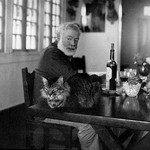
You all know, I’m sure, that he wrote the last line of The Sun Also Rises something like thirty different ways, with slightly different inflection. And it was a short sentence! “Isn’t it pretty to think so?” Every word mattered to him and he wasn’t looking for the ten dollar word. It was how he put the simple words together.The point is that even a creative literary genius like Papa had to work it. It didn’t flood down from heaven and then come flowing out. He had to work, rework, revise, cut, add, revise. That was reassuring and inspiring for a mere attemptor like me.
F. Scott Fitzgerald gave him invaluable advice on The Sun Also Rises. He crossed out Hem’s original beginning and said “start it here.” Hem did and the rest is history. As my best writing mentor put it, “New writers are always telling me to stick with their story, that it really gets good. I tell them to start it where it really gets good.” INVALUABLE ADVICE.

2) The main character in my novel is named Archer Loh. She cites Hemingway often and not just the ever popular grace under pressure comment. She has one scene in which she gets drunk and renacts a conversation with Jake Barnes pointing out his lack of empathy for Brett’s point of view and issues. Her dog is named Hadley. I think it works. You be the judge.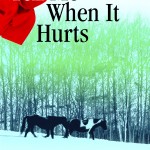
3) Hemingway tended to know where his books were going. To even talk about my book and its planning in the same breath as Hemingway is so absurd as to be insane. My only observation is that when I planned my novel, I knew the beginning and the end. I did not have the center all set out in outline form with detail but I did know where I was going. For me, it gave me freedom to see where the writing took me but I always knew where I had to end up. I think Hem knew exactly where he was going if not in every detail.

Many of the finest writers know the entirety of their books before they set it down. I can’t imagine that John Irving doesn’t have the details in mind before starting. If anyone knows if this is so, or not so, I’d be interested. His plots are just so intricate and yet connected despite seemingly random plot elements that to me they must be preordained.
Hemingway is not as prominent in my second novel, with a working title of The Rage of Plum Blossoms. There is one reference to one character collecting Hemingway First Editions but that’s about it. And I of course wish I’d written The Paris Wife before Paula McLain. Sigh sigh. Sigh, sigh. Sigh.
All good books have one thing in common – they are truer than if they had really happened. Ernest Hemingway




